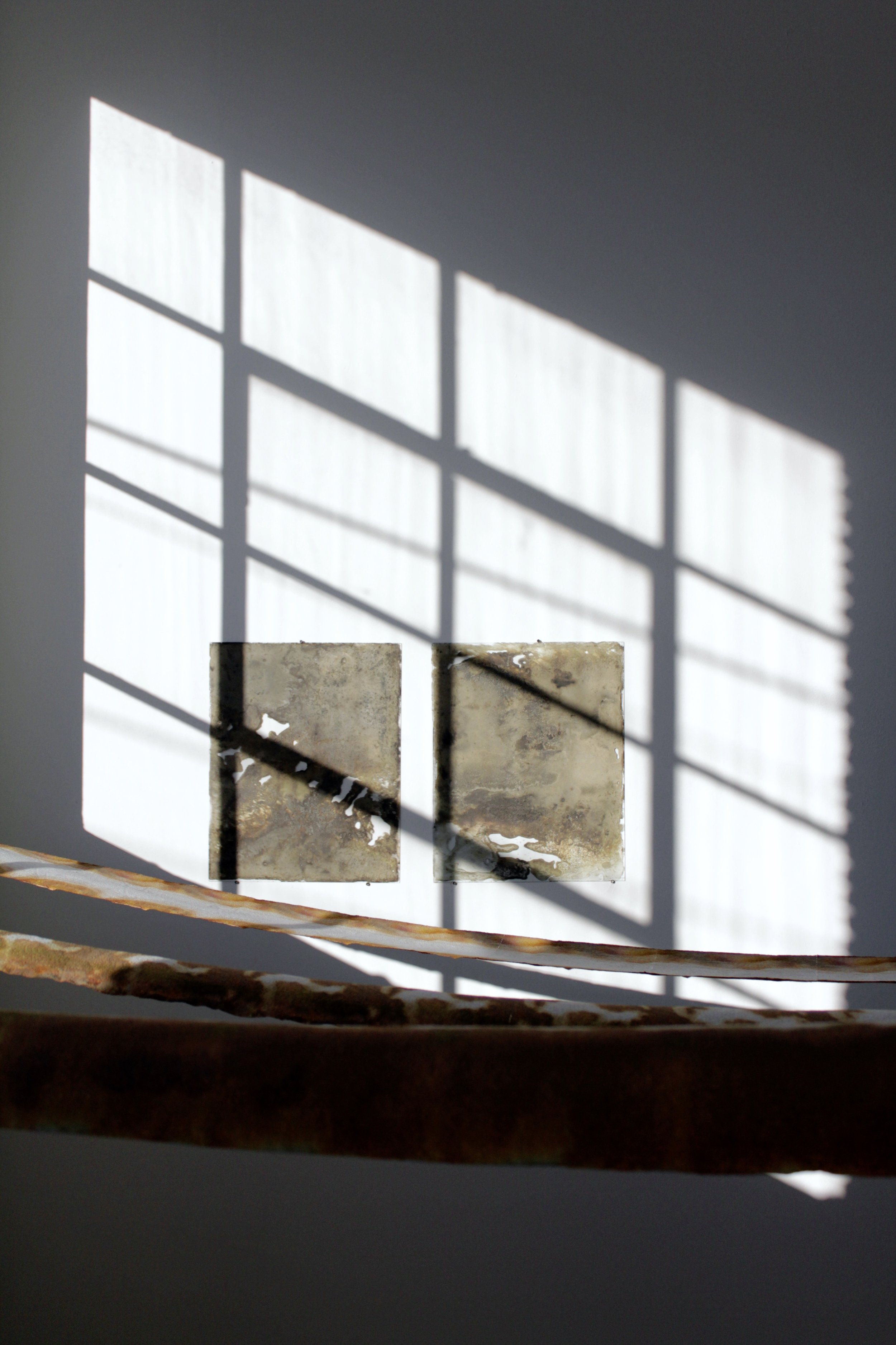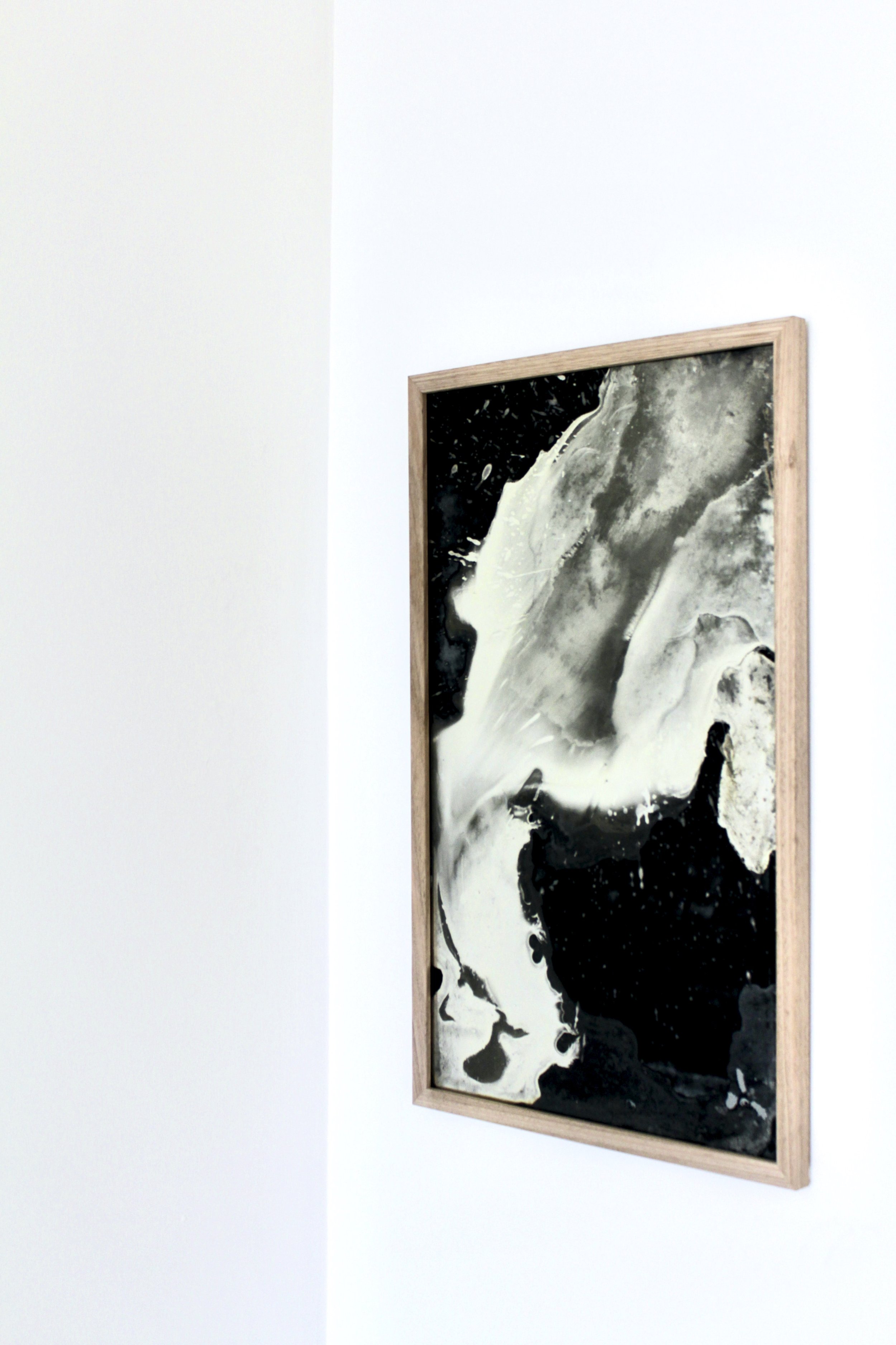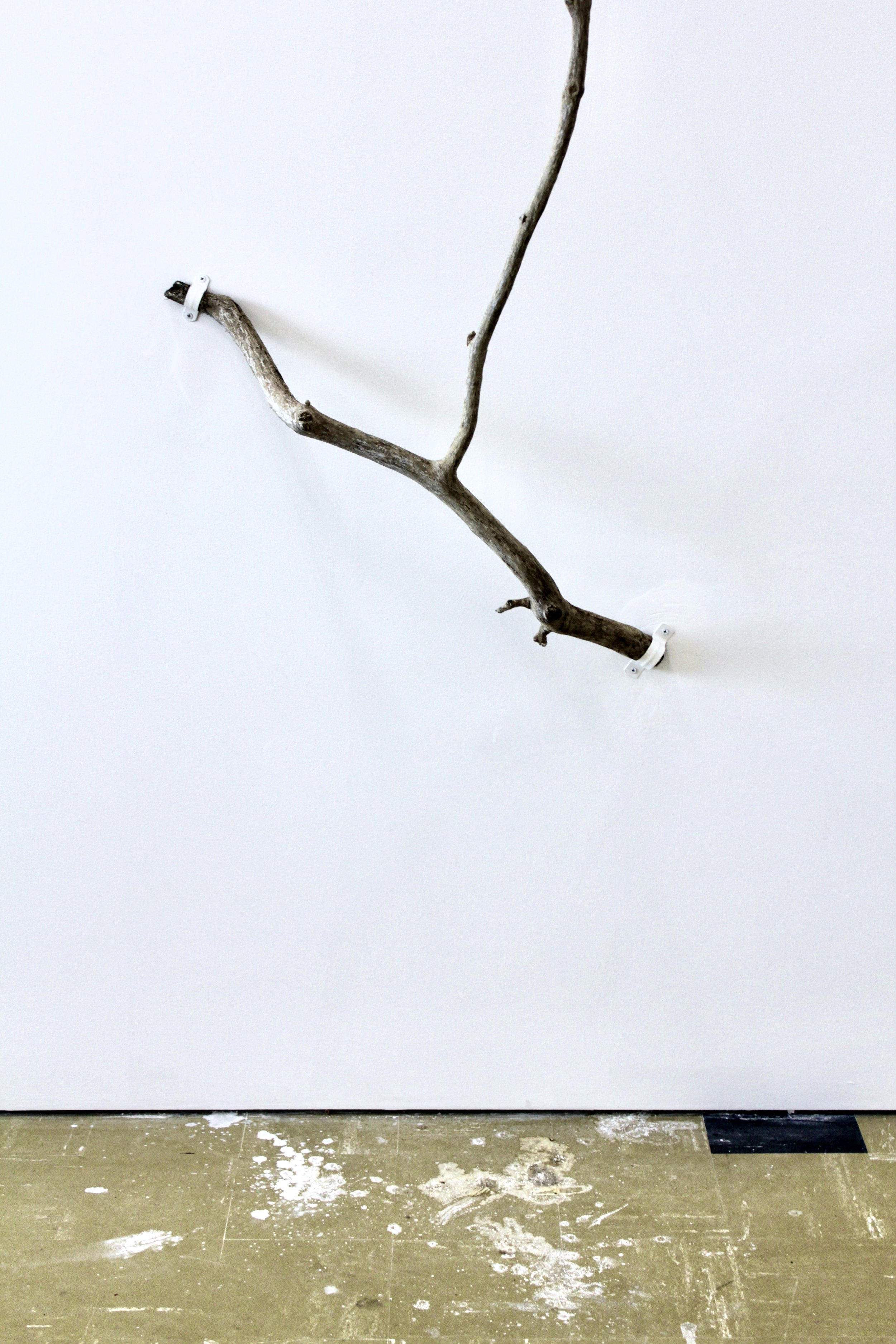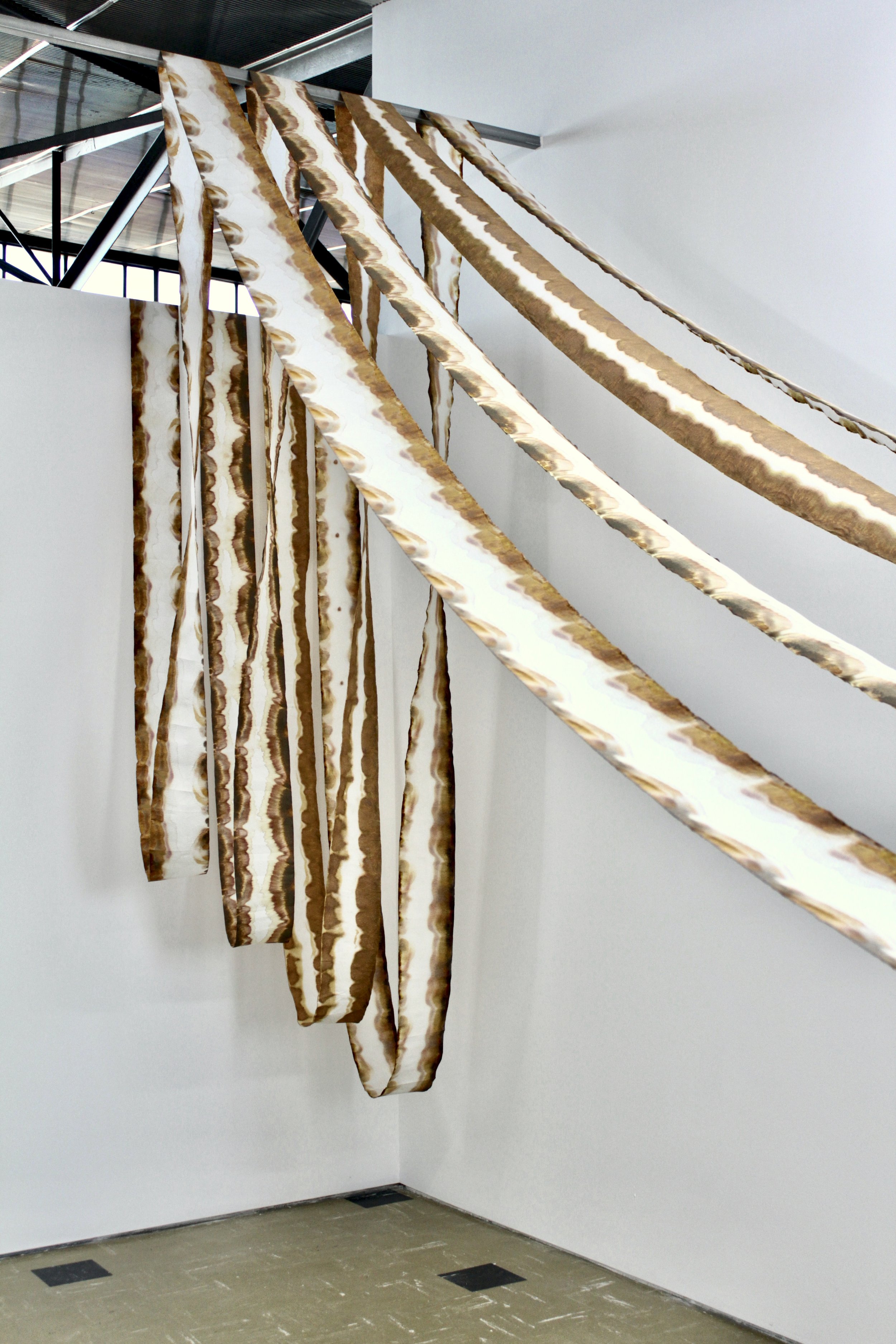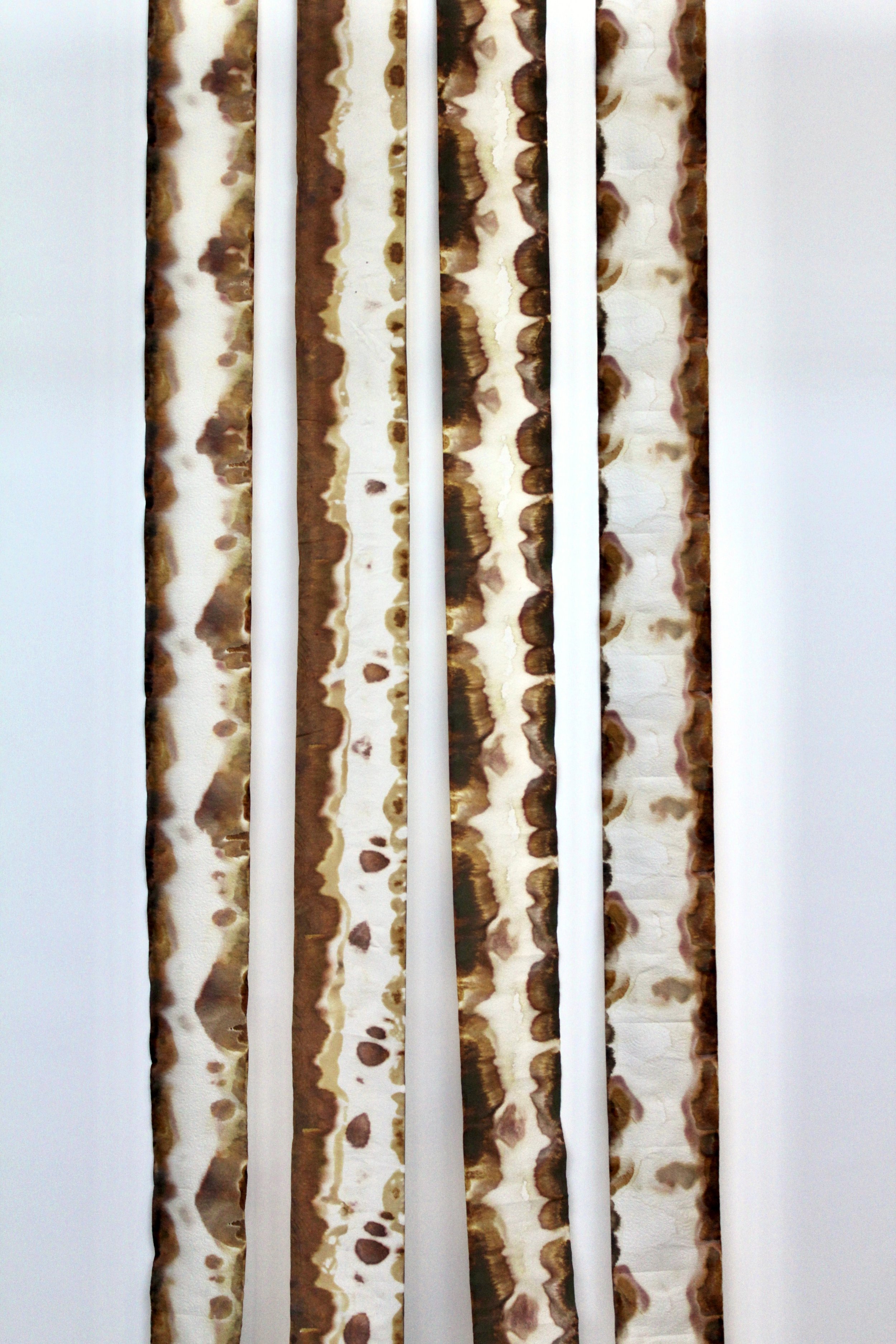the body we share
Noah Spivak
19th of May - 11th of June, 2021
Behind the looking glass: Noah Spivak’s the body we share at GalleryGallery, Brunswick
My first encounter with GalleryGallery, located at 7 Hope St, Brunswick, was during its brief stint as a slightly bootleg cinema (showing titles such as the oddball and virtually unknown French comedy Il y a Des Jours et Des Lunes). Residing on the second floor of an unassuming former factory warehouse — the sign above the door declaring only, incorrectly, vaguely, DANCE STUDIO— intuitive form GalleryGallery marked its first use as an exhibi=ng space this winter, with Noah Spivak’s intriguing and evoca=ve exhibi=on the body we share.
An opening of Noah’s show was held on the 19th of May with only very limited and mysterious activities of publicity beforehand. It was, nonetheless, an in=mate success, with a toasty atmosphere provided by the Factory House Band (comprising Oscar France and Mick Power of cult jazz Bohjass notoriety) and their ambient soundscape accompaniment.
Noah Spivak is a Melbourne artist whose practice consists of installation artwork and the pursuit of materials and processes to their limits. For the past few years, his attention has been upon the manual creation of mirror forms, though you would not have known it stepping into this exhibition.
The works on display consist of thus: three abstract, rectangular, metallic pieces hang on the wall. Several great streamers of stained paper towel affixed with small concrete objects upon the windowsill, which dip neatly down into the gallery space, spoon over the roofless gallery wall, and merge into a colourful pile outside the open doorway. And, finally, a single, pale, curiously textured branch is bolted to the wall.
The relationship between these objects is not immediately nor, admittedly, retrospectively obvious. The description of the exhibition reads only:
This exhibition showcases remnants of a process that has enveloped Spivak’s practice for the last two years.
Side experiments given the spotlight; unassuming materials a chance to be seen.
Any connection remains firmly unarticulated, so going only by the context provided, one is charmed and intrigued by the prospect of a body being present.
At first mention it is assumed to be something shared between the viewer and the artist, alluded to in the warm and encompassing ‘we’. There is in fact an association of human bodily fluids suggested in several elements. Upon the paper towels are rich, orange-brown stains that repeat themselves hypnotically. Impossible to ignore associations with menstrual and faecal colours emerge, which dispel when you notice then there are, through the ribbons of ochre, moments of sweet pastel pinks and yellows.
Meanwhile the piece near the door contains the closest clue to the correlation between all the elements. Its flat surface is clouded with a sperm-white pattern that resemble the sea winding through barely reflective black wash. Straight on, it reveals a glint of mirror encroached by something akin to spillage.
The verbal reference to a body adds an allusion of warm corporeality to an otherwise earthy yet distinctly fleshless exhibition. The unanswerable question means the viewer returns again and again to the information given, as if a body will materialise in the negative space when looked at from the right angle. But the only bodies present in the room are those of the viewers, intercepted by the artwork only briefly when a figure is reflected dustily in the sliver of mirror in the piece beside the door.
The impenetrability of this exhibition gives it a great magnetism. It emanates mystery. The simultaneously closed nature of the art, alongside Noah’s openness to explaining it, is a lovely yet frustrating narrative arc for experiencing the work.
Once context is doled upon you or encountered by chance, you are informed that what remains, these remains, are those of the process of mirror-making. The stains that repeat upon the paper towel are products of the same four chemicals that compose mirrors; the two artworks near the window are the backs of mirrors exposed to air and oxidizing, the glass heating up and causing the silver to ‘sweat’; the piece next to the door is a mirror that has been allowed to curdle and soil, with an effect familiar to anyone who has ever left an old mirror in their garden and exposed to the elements; and the branch has been carefully dripped on with the same chemical mirror solution, hence its mottled surface.
The exhibition, you find out, is effectively the displayed remnants in answer to the question of ‘what is le\ a\er the creation of a mirror—what is not seen?’ (or perhaps more indulgently, ‘what goes unreflected?’)
Noah shares with me eventually— after I express my feeble attempts in finding the referenced ‘body’— that this allusion to flesh refers to the unseen mirror itself, but from the point of view of the various exhibited elements. It is an interesting effect to note that in personifying these pieces through their sentimentality for a body which is not present, these ‘remnants’ are themselves given a voice, implying the vocal cords, the mammalian capacity for longing, and the associated possession of bodies all of their own.
What is so interesting about these offcuts of mirror-making is their reminiscence of organic and natural forms despite their strictly chemical components. The patterns upon the paper towels look like flowing deserts or the previously mentioned body fluids, but with the subtlety and diversity of sunsets. Those that pile outside the gallery space are vivid, ecstatic, and mould-like, in turns, resembling huge, discarded snakeskins. And the grey-moRled wall pieces distinctly suggest the whirling away of sea against shoreline and rock, its random fluid beauty, its cacophony of ancient erosion.
It is as if a mirror is a distilation of everything cold and hard and metal in the world, but to be so it must shed its fleshy underbelly, this imperfect body that appears to bleed and mould and rot and spill and exceed its edges. This is the chaotic yin to the mirror-form’s clean yang, and it is strange, sensitive, and fascinating to behold.
the body we share was exhibited at GalleryGallery from the 19th of May to the 11th of June, 2021. You can keep in touch with further GalleryGallery projects at @gallergalleryinc or email to join their mailing list at gallerygalleryinc@gmail.com.
Ruby Constance
